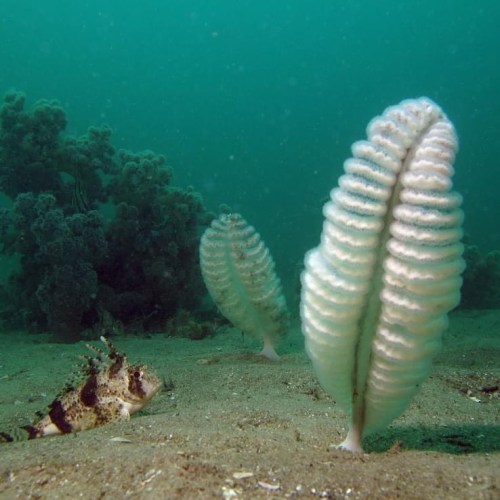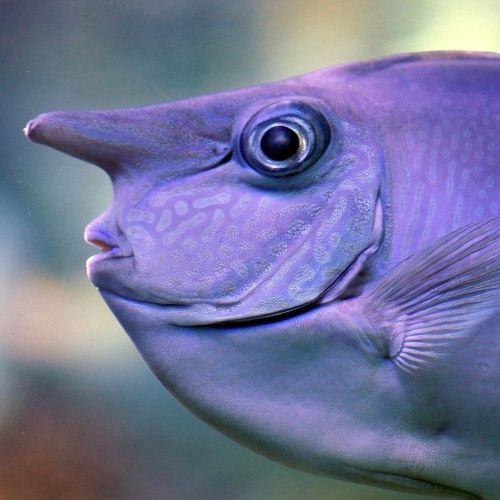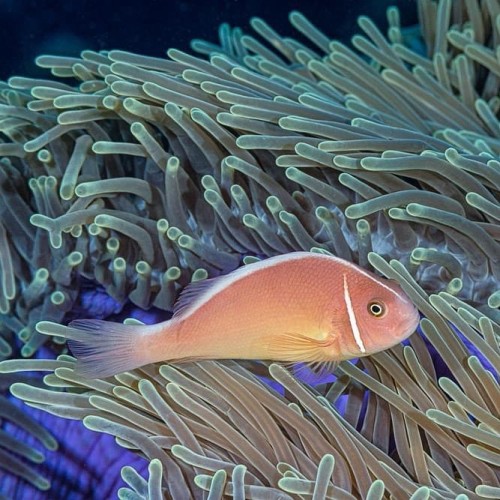#oceanlife
I have courage to forgive
I am the Ocean!
music: You say run - FalKKone (Remix from “Boku no Hero”)
I am soaked in miracle
I am the Ocean!
I am grateful for my angels
I am the Ocean!
Health want me
I am the Ocean!
I don’t hold grudges
I am the Ocean!
I am grateful for all goodness and all on its way to me, I am mantra
I am the Ocean!
My mood is the only evidence
I am the Ocean!
Did you know? There are about 300 species of sea pens that can be found swaying on the ocean floor around the world.
You might be surprised to find out that this feather-like structure is actually a colony of polyps that work together to survive. Different polyps have different responsibilities depending on their location on the body. There are feeding polyps that catch plankton, as well as polyps that circulate water to keep the colony balanced and upright.
Photo: Richard Ling, CC BY-NC-ND 2.0, flickr; kidney sea pens (Sarcoptilus grandis) pictured
#AnimalFacts #OceanLife #SeaPen #Ocean #nature #fish #dyk #MarineLife #MarineBiology
https://www.instagram.com/p/Cb_UKlsLemR/?utm_medium=tumblr
Post link
Unicornfish aren’t something from a fairy tale–they’re real!
There are around 20 species of unicornfish, also known as unicorn tangs, that make up the genus Naso. While they’re named for the horn-like structure on their foreheads, not each species has horns—and the purpose of the appendage is still a mystery. That’s not their only bodily accessory, either. They also have sharp blades on their tails that come in handy when warding off foes. These fish live in tropical reefs in Indo-Pacific waters, where they swim in schools and snack on zooplankton.
Photo: Bernard Spragg. NZ, CC0 1.0, flickr; White margined unicornfish (Naso annulatus) pictured
#AnimalFacts #unicornfish #OceanLife #unicorns #nature #fish
https://www.instagram.com/p/CboM8WarR3D/?utm_medium=tumblr
Post link
Here’s something green for St. Patrick’s Day: the green sea turtle (Chelonia mydas)! Its signature color comes from its herbivorous diet, which includes seagrass and algae.
In fact, it’s one of the few sea turtles to mainly feed on vegetation. You might notice that its shell is brown; this is because its diet only affects the color of its fat. The reptile is big, too. It can grow to be as much as 4 feet (1.2 meters) and weigh a hefty 350 pounds (159 kilograms)! It has a wide range across tropical and subtropical waters and can be spotted in the Atlantic Ocean, Indian Ocean, Mediterranean Sea, and Pacific Ocean.
Photo: prilfish, CC BY 2.0, flickr
#AnimalFacts #GreenSeaTurtle #turtles #StPatricksDay #OceanLife
https://www.instagram.com/p/CbObblhLBwc/?utm_medium=tumblr
Post link
Did you know? There are nearly 30 species of clownfish! Here’s one you may not know: the pink skunk clownfish (Amphiprion perideraion).
Also known as the pink anemonefish, it can be found in parts of the Indo-Pacific where, like other clownfish species, it has an affinity for anemones. The anemone’s poisonous tentacles offer protection to the clownfish, which takes refuge from predators (and is itself protected from its host’s stings thanks to a layer of mucus). In turn, the fish aggressively defends its host from other fish and cleans off parasites.
Photo: François Libert, CC BY-NC-SA 2.0, flickr
#AnimalFacts #clownfish #anemone #OceanLife #nature
https://www.instagram.com/p/CbLyuvcLlHD/?utm_medium=tumblr
Post link
The black spot on the copperband butterflyfish’s (Chelmon rostratus) dorsal fin isn’t just for show, it’s actually a form of defense! How?
It’s a false eyespot, likely to confuse and deter predators from approaching. The fish uses its long snout to reach prey, like crustaceans and coral polyps, that are found in crevices and holes of coral reefs. It inhabits shallow tropical reefs in the Indo-Pacific.
Photo: to.wi, CC BY-NC-SA 2.0, flickr
#AnimalFacts #fish #OceanLife #ocean #butterlyfish #dyk #camouflage #nature #CoralReef
https://www.instagram.com/p/CdPHIA1r7E4/?igshid=NGJjMDIxMWI=
Post link
While most octopuses camouflage themselves in the face of danger, the sand octopus (Octopus kaurna) buries itself.
Unlike many of its relatives, this inhabitant of southern Australian and Tasmanian waters is unable to blend in with its surroundings. For a hasty getaway, the sand octopus shoots jets of water into the ocean floor to loosen up the sand, then burrows itself beneath the surface. Once below, it lines the walls with a layer of mucus, which acts like a “glue” that keeps the grains of sand in place, preventing its hiding spot from losing its shape.
Photo: Saspotato, CC BY-NC-SA 2.0, flickr
#AnimalFacts #octopus #OceanLife #dyk #SandOctopus #nature
https://www.instagram.com/p/CdHqltrNBoq/?igshid=NGJjMDIxMWI=
Post link
Grab your baskets! Here are a few “Easter eggs” for you to consider today. Banded jawfish dads-to-be carry eggs in their mouth.
This behavior—which helps protect offspring from predators—is known as mouthbrooding, and it’s common across the jawfish species. To attract females, males do a “dance” that involves a series of sweeping movements and fin-flashing. And the crescendo of this courtship ritual? Males open their mouths as wide as possible to boast their mouthbrooding potential!
Photo: Kevin Bryant, CC BY-NC-SA 2.0, flickr
#AnimalFacts #nature #NaturalHistory #OceanLife #EasterEggs #eggs #fish #BandedJawFish #MarineBiology #easter
https://www.instagram.com/p/Ccc-3rjrSfB/?igshid=NGJjMDIxMWI=
Post link
POV: floating under the sea, serenely drifting with the jellies.
Sit back and relax with these soothing jellies. From tiny delicate drifters, to giant deep-sea denizens, jellies come in a variety of beautiful and mesmerizing forms. There are many different kinds of gelatinous animals in the deep, but here we are featuring the umbrella-shaped animals that swim by pulsing a bell and usually have tentacles trailing behind their mellow flowing movement.
Does anyone else need some ceph-ASMR?
MBARI’s robotic submersibles often spot this little octopus resting on the mud, its orange body resembling a flat, fluffy pancake. When startled by a predator, a flapjack octopus perks up and swims to safety by flapping its stubby fins, pulsing its webbed arms, pushing water through its funnel for jet propulsion—or all three at once. When the coast is clear, it stretches its webbed arms and parachutes back to the seafloor.
Flapjack octopuses (Opisthoteuthis spp.) can grow up to 20 centimeters (20 inches) across. They’re typically found at depths between 130 and 2,350 meters (430 and 7,710 feet) where they feed on small worms, crustaceans, and other invertebrates.
When you show up to the mud-themed party wearing head-to-tentacle red.
Gelatinous zooplankton like this Ptychogastria jellyfish are common in the deep ocean, especially where the water column meets the seafloor. There are many different species of little red jellies like this one, and it’s often difficult to tell them apart. MBARI scientists have spent years collecting and analyzing data that would help to distinguish these species from one another based on their shape and form. They developed a key to help scientists tell these look-alike species apart through their physical differences, depth distribution, and behavior.
Pillow fight with an octopus—who’s in?
These pillows may be a little harder than your average square of fluff! Pillow lavas look like rounded blobs of solidified lava. They are formed as lava pours slowly out of the seafloor, and the outer edge is cooled very quickly by the cold seawater. Think about squeezing toothpaste out of a tube, but instead of it flowing freely, the outer skin of the toothpaste hardens as soon as it touches air. Pillow lavas come in various sizes and shapes, and each of these shapes can tell us a bit about the eruption that formed them.







